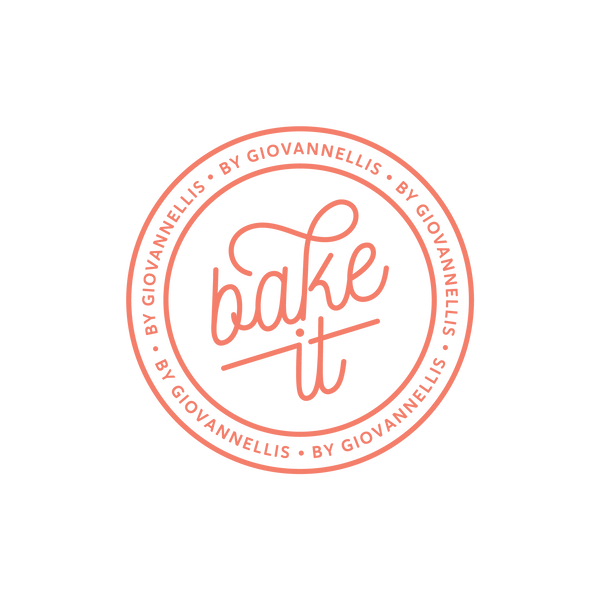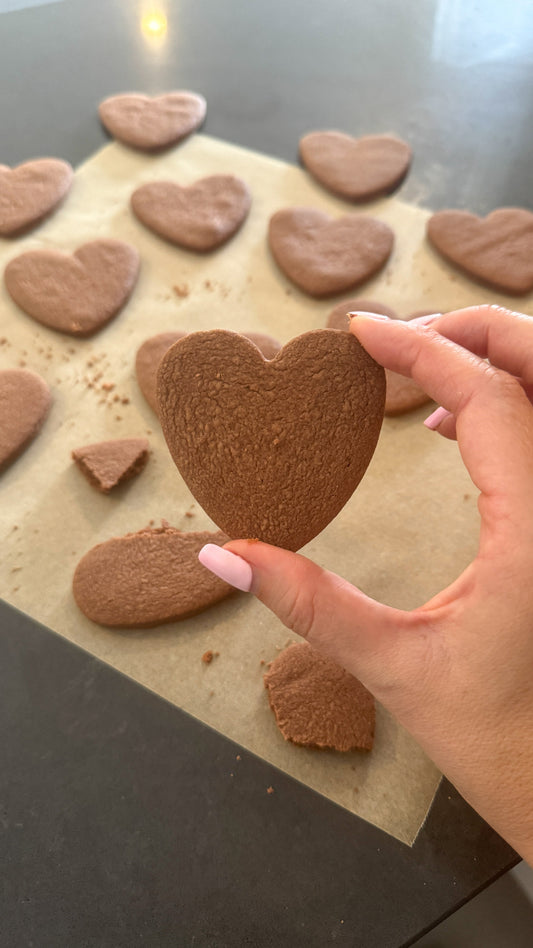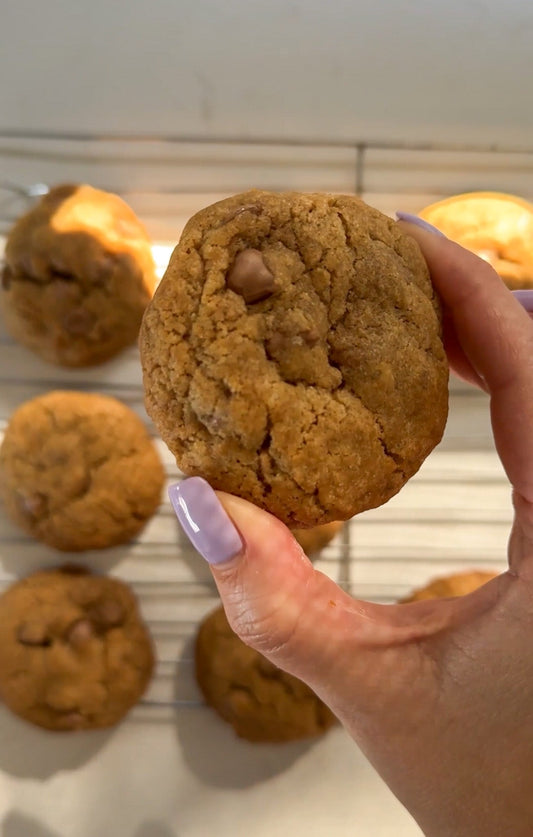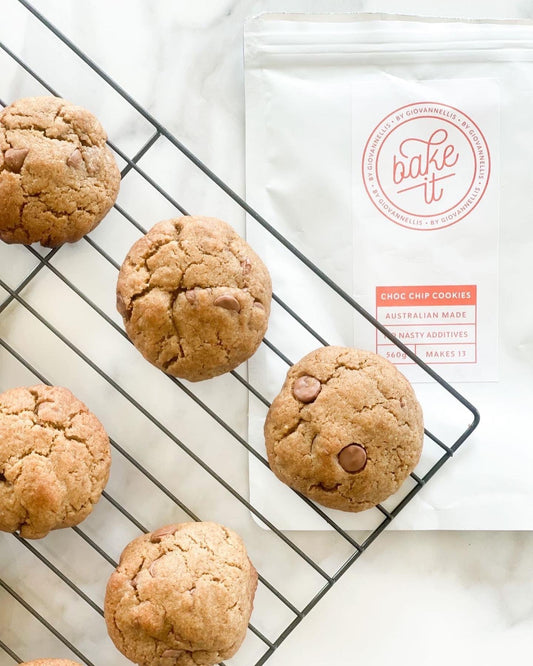How to Freeze Your Baked Goodies the Right Way

Your freezer probably isn’t the first thing you think of when it comes to baking, and honestly, a lot of people assume that freezing baked goods will ruin the taste or texture. But that’s not the case. Your freezer can actually be one of your best baking tools and even help enhance flavour and freshness.
Yes, sometimes you can tell when cakes or cupcakes have been frozen (or worse, still are), but that usually comes down to how they’ve been stored. In this guide, I’ll walk you through what you can freeze, how to do it properly, and how to defrost it so your baked goodies still taste amazing.
What Can You Freeze?
There’s actually a lot you can pop into the freezer when it comes to baking. Here’s a breakdown:
Baked Cakes, Cupcakes, Banana Bread, Brownies and More
All of these can be frozen once baked for up to 3 months. I usually freeze icing and cupcakes separately. You can freeze them together, but I prefer to store them apart so I can give the icing a mix to freshen it up. I wouldn’t freeze the batter for these only once they’re baked.
Cookies and Cookie Dough
Choc chip cookies, shortbread, gingerbread and similar cookies can also be frozen for up to 3 months. You can freeze them baked or as dough.
-
For choc chip cookie dough, I like to roll it into balls before freezing.
-
Shortbread can be frozen as a whole dough or pre-cut into shapes.
-
Both can be baked straight from frozen or thawed before baking.
How to Freeze Baked Goods and Dough
There are a few different ways to freeze everything depending on what it is.
Cakes and Cupcakes
Wrap each item in two layers of cling wrap and then a layer of foil. Some may see this as wasteful, but I used this method during my cake business (making wedding and birthday cakes) and found it to be the best for avoiding freezer burn. If you'd rather use an airtight container, just make sure it’s the right size. Too much extra air can cause freezer burn.
If you want a full step-by-step, I’ve written a separate blog on how to freeze cakes and cupcakes properly check it out here
Buttercream
Store buttercream in an airtight container or sealable reusable silicone bag. You can also use sandwich-size zip-lock bags and flatten it to save space as well. We know that freezer space is valuable.
Cookie Dough
Mix your dough as normal, roll into balls (or cut into shapes for shortbread or gingerbread), then pre-freeze before storing.
To do this:
-
Place dough balls or shapes on a baking paper-lined tray, making sure they aren’t touching. But you don't need to leave bigger gaps like when you are baking them, just a small space.
-
Freeze uncovered for about 20–30 minutes until hardened.
-
Transfer into an airtight container or resealable bag.
Pre-freezing ensures the dough doesn’t stick together in the container, which means you can get them out one by one not a giant ball of cookie dough.
If you're freezing a whole dough (like shortbread) without pre-cutting, wrap it tightly in cling wrap and foil, or place it in a resealable sandwich bag. No container needed for this one and I prefer not using the container. You can make it a bit flatter too instead of a big ball so that is easier to store.
Baked Cookies
These can go straight into an airtight container or resealable bag no pre-freezing required for these ones as they won't stick in the same way. But again make sure the size is correct, we don't want t a bunch of space or air in there.
How to Defrost or Use Your Frozen Goodies
Cakes and Cupcakes
Take them out of the freezer and let them sit still wrapped for about 15 minutes. Then unwrap and allow them to defrost completely. We do this to help with the moisture while defrosting, again this was a trick I learnt back when making cakes and works better than f you just unwrap straight away. If you’re not icing them, give them a quick 15–20 second zap in the microwave once defrosted. I’ve also written a full blog on this you can read it here.
Buttercream
Let the buttercream defrost completely and give it a good mix to bring it back to life. You can use a mixer or just a spatula/spoon. If you’re short on time, microwave it in short bursts (5–10 seconds), mixing in between and checking, it really shouldn't take long. Be careful though butter melts quickly so don't over do it, you can always microwave a bit longer but if you over-do it, you can't take the time off.
Cookie Dough
You can bake cookie dough straight from frozen, it might just need an extra minute or two in the oven. I always check at the regular baking time to see how it is going though. Shortbread and similar cookies should still be chilled before baking to hold their shape so don't leave them out too long if you are defrosting them.
Baked Cookies
Defrost your cookies at room temperature. Things like shortbread or gingerbread thaw quickly. You can also refresh all your cookies with a quick 15–20 second microwave zap, which makes them taste freshly baked again. I do this with my cookies regularly even when they’re not frozen just to freshen them up slightly, which you can read my blog on this here.
Why Freezing is So Helpful in Baking
Freezing your baked goods can be a game changer when prepping for the holiday season, birthdays, events or even just dinner parties. It saves time and stress. You can make things ahead when you’ve got a spare moment instead of baking at midnight the night before or stressing about baking the day of the event. There is always so much to do so anything that can help is fantastic.
It’s also a great way to stay on top of lunchbox prep. Bake in bulk, freeze, and you’ll always have snacks ready to go. Just pop one in a lunchbox and it will be defrosted by morning.
So don’t be afraid of your freezer in baking it really can be amazing and save time. Use it to your advantage and make home baking easier.
As always if you have any questions you can always reach out via DM, or our contact form, we are always happy to chat.
Happy Baking
Love Ash



